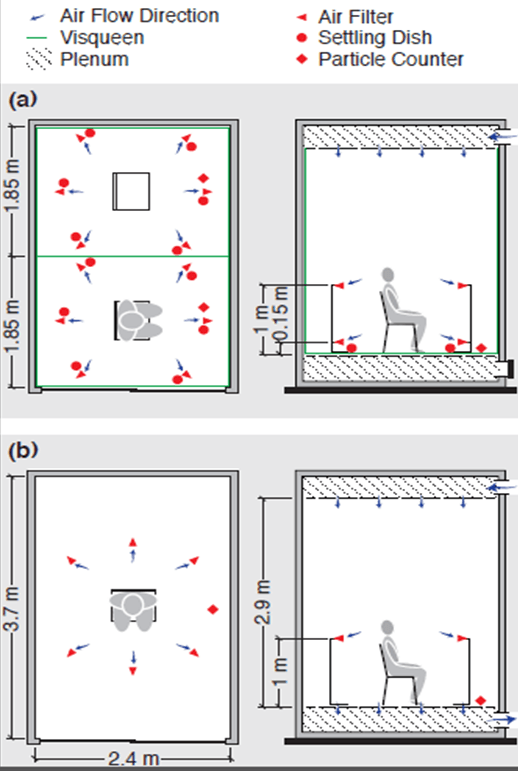Humans Carry a Personal Microbial Cloud

According to a study from the University of Oregon, humans have a microbial cloud signature. Each person emits a specific bacterial population into the air, a unique bacterial cloud that allows identification of the individual that breaths it out. The findings were published in the journal PeerJ.
Humans constantly emit bacteria by different means: by direct contact with surfaces and by emission from breath, skin and clothes, at a rate of 10^6 particles per hour. It has been shown that, by direct contact, people can leave their bacterial signature in surfaces. Bioaerosols, suspensions or airborne biological or biologically-emitted particles, have been studied to understand and control infections. But how bioaerosols relate to human emissions is poorly understood, due to the difficulty in separating human contribution from dust resuspension. Recent studies with controlled dust resuspension suggest that human contribution to bioaerosols is higher that previously thought. The authors decided to characterize this contribution, and how it affects microbial populations in surfaces and indoor spaces.
Humans leave their bacterial imprint in indoor spaces
The researchers built climate chambers and sterilized them by ventilation and surface disinfection. They carried out experiments for 3 people, twice for each person. Each individual sit inside the chamber for a period of 2 and 4 hours, after which the chamber was analyzed for bacteria by DNA sequencing. The researchers could distinguish clearly each person´s microbiome in their microbial cloud: each one showed specific combinations of Streptococcus, Propionibacterium and Corynebacterium. To make sure these results were reliable, they carried out another set of experiments with 8 people who sat inside the chamber for 90 minutes, with an air flow that changed the air in the chamber one or three times per hour. The authors confirmed that each person emited a personal microbial cloud, identifiable in the surrounding air and surfaces. Sterile dishes were also placed in several places inside the chamber. The bacteria collected can be considered a very good approximation to the residual bacterial signal a person leaves in a space.
This study opens new possibilities in forensic sciences: it is now feasible to detect if a person has been in an indoor space. Although the personal microbial cloud is short-lived, it lasts long on surfaces. The results stress also the importance of ventilation in health-care facilities ventilation, as the microbial cloud tends to be captured in ventilation systems.

